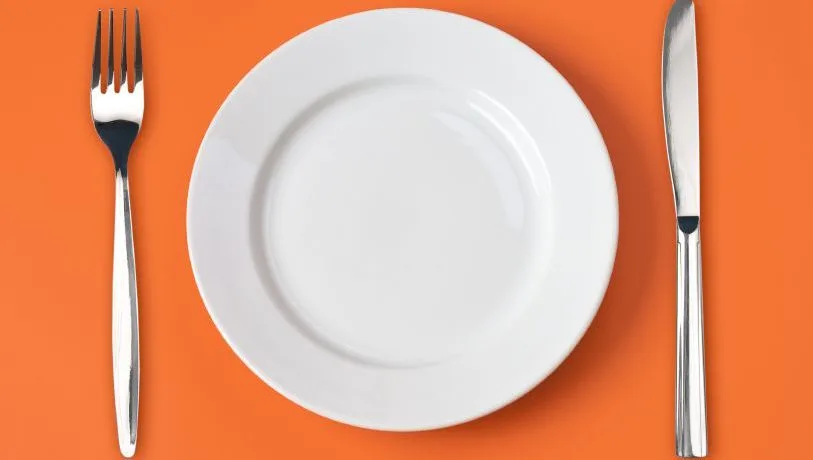Intermittent fasting has exploded in popularity as a simple yet powerful approach for weight loss. But what exactly is intermittent fasting and how does it lead to fat burning and weight loss? In this blog post, we will uncover the science, benefits and practical strategies for utilizing intermittent fasting to successfully shed unwanted pounds.
Whether you are looking to lose those last few stubborn pounds or embark on a transformative weight loss journey, intermittent fasting may be the missing link you need. Unlike restrictive diets, intermittent fasting does not involve calorie counting or eliminating food groups. Instead, it provides a flexible and sustainable structure for when you eat your regular meals and snacks. Let’s explore the basics of intermittent fasting and how to implement it for successful, long-lasting weight loss.

Understanding Intermittent Fasting
Intermittent fasting involves alternating between periods of eating and fasting. It does not dictate what or how much you should eat, just when. There are several methods, including:
- 16/8 Method: Fast for 16 hours per day and consume all meals within an 8-hour window. For example, skip breakfast and eat lunch around noon and dinner by 8pm. This is a popular and relatively easy method.
- 5:2 Diet: Eat normally five days a week and limit calories to 500-600 two days a week. Fast days should be non-consecutive.
- One Meal A Day (OMAD): Eat just one main meal per day, typically dinner.
Intermittent fasting impacts your metabolism by prolonging periods of low insulin levels. This activates fat burning and triggers ketosis – when your body starts burning stored fat for fuel. Additional benefits include:
- Weight loss – especially reduction of stubborn belly fat
- Reduced insulin resistance and risk for type 2 diabetes
- Improved cardiovascular health
- Increased mental clarity and focus
- Anti-aging and disease prevention effects
For weight loss, intermittent fasting is a powerful strategy that gets results.
The Science Behind Intermittent Fasting for Weight Loss
So what makes intermittent fasting so effective for weight loss? There are several physiological factors at play.
First, fasting triggers your body to start burning its stored fat for fuel. The longer you fast, the more your body relies on fat breakdown for energy, leading to weight loss.
Second, fasting promotes lower insulin levels. Since insulin tells your body to store fat, lower levels equal less fat storage over time. Intermittent fasting essentially sensitizes your cells to better respond to insulin.
Third, fasting initiates a cellular repair process called autophagy where your body cleans up damaged cells. Autophagy helps rejuvenate your metabolism and overall health, further aiding weight loss.
Together, these fasting mechanisms accelerate fat loss. Pair intermittent fasting with healthy eating in your eating window and the results are magnified.

Practical Tips for Intermittent Fasting Success
Here are some tips to make intermittent fasting easy and sustainable as part of your lifestyle:
- Start gradually – Begin with 12-14 hour fasts and work your way up to longer fasts. This allows your body to adjust.
- Pick a method that fits your schedule – Customize fasting times based on your daily routine for consistency.
- Stay hydrated – Drink plenty of water and low-calorie beverages like tea and coffee during fasts.
- Plan your meals – Focus on high protein, high fiber, low glycemic index foods within your eating window.
- Avoid sugary, processed carbs – These spike blood sugar and trigger cravings, making fasting more challenging.
- Supplement if needed – Bone broth, electrolytes and vitamins can ease fasting side effects.
- Listen to your body – Modify or stop fasting if you feel unwell. Consult a doctor if needed.
- Stay active – Light exercise during fasting is fine. Time more intense workouts during eating periods.
With preparation and smart food choices, intermittent fasting does not feel restrictive. You control when you get to eat, not what or how much.
Handling Common Intermittent Fasting Challenges
Changing when you eat and implementing intermittent fasting does take an adjustment period. Here are some solutions to common challenges:
- Hunger pangs – Drink water or herbal tea. Stay busy and distracted. Hunger comes in waves and will pass. Your body adapts to fasting within 1-2 weeks.
- Cravings – Plan indulgences into your eating window. Fasting helps control cravings and reduce mindless snacking.
- Fatigue & low energy – Ensure proper nutrition during eating windows. Supplement with B vitamins, electrolytes and adaptogens.
- Headaches – Can be a sign of low blood sugar, dehydration or electrolyte imbalance. Dose salt water or take an electrolyte tablet.
- Difficulty sleeping – Avoid eating 1-2 hours before bedtime. Limit caffeine late in the day. Melatonin supplements can help.
- Constipation – Stay hydrated. Eat fiber-rich foods during eating window. Consider probiotic supplement.
Be patient through the adjustment phase. The longer you fast, the easier it becomes as your body adapts. The mental clarity and energy you’ll experience is well worth it.

Intermittent Fasting and Exercise for Weight Loss
To maximize weight loss, combine your intermittent fasting routine with regular exercise appropriate for your fitness level.
Any movement during your fasting window boosts fat burning. Walking, gentle yoga, leisurely biking and light resistance training are all great options. Save more strenuous workouts for your eating window when you have nutrients to fuel you.
Aim for at least 150 minutes of moderate exercise or 75 minutes of vigorous exercise per week. Going beyond 300 minutes provides even greater weight loss benefits.
For the best fat burning results, incorporate both strength training and cardio. Some effective routines include:
- Circuit training – Combines resistance exercises with cardio intervals
- HIIT – High intensity interval training spikes metabolism through short, intense bursts
- Strength training – Builds lean muscle mass that raises your resting metabolism
- Steady state cardio – Gets your heart rate up and burns calories through activities like brisk walking, jogging, cycling or swimming.
Listen to your body and take rest days when needed. Pairing consistent exercise with intermittent fasting is a recipe for success. You’ll shed fat fast while building strength and endurance.
Health Considerations with Intermittent Fasting
Intermittent fasting is safe for most healthy adults. However, you should consult your healthcare provider before starting, especially if you have any underlying medical conditions or nutritional deficiencies.
Here are some precautions to keep in mind:
- Women may need to fast for shorter timeframes due to hormone fluctuations.
- Individuals with type 1 or type 2 diabetes will need to carefully monitor blood sugar levels.
- If you have gut issues, a short fast may be better tolerated to start.
- Avoid fasting if you are underweight, pregnant, breastfeeding or under 18 years old.
- Break your fast if you feel faint, extremely fatigued or unwell.
Stay well hydrated, pay attention to your micronutrient intake, and ease into fasting gradually. This minimizes adverse effects. Monitor yourself and stop intermittent fasting if any concerning symptoms arise.
Crafting a Personalized Intermittent Fasting Plan
Here are some tips for customizing an intermittent fasting plan that caters to your individual needs and goals:
- Consider your schedule and lifestyle – Pick fasting times that are convenient and realistic. You don’t want to be starving during long work meetings.
- Start conservatively – Begin with a 12-14 hour fast and work up to 16-20 hours. Allow your body to adapt.
- Pick 1-2 consistent fast days for 5:2 or OMAD plans. Follow a repeatable weekly schedule.
- Use a fasting tracker app – Monitor your fasts, hunger levels, energy and mood. Identify patterns and optimize.
- Determine calorie needs – Use a TDEE calculator to find your maintenance level for non-fasting days.
- Weigh yourself weekly – Track progress and adjust your routine as needed. Patience is key.
- Stay flexible – Life happens. If you need to change your fasting schedule, do so and get back on track the next day.
Listen to your body, tune in to your energy levels and design an intermittent fasting routine that sets you up for sustainable success.

The Power of Intermittent Fasting
Intermittent fasting provides a simple yet powerful weight loss solution. By giving your body extended breaks from eating, you tap into fat burning mechanisms leading to noticeable fat and weight loss over weeks and months. With a customized approach, patience and consistency, you can unlock the many health and body composition benefits of intermittent fasting.
We covered a lot of ground in this beginner’s guide to intermittent fasting. To recap, you now understand:
- How intermittent fasting works for weight loss
- The science behind why fasting burns fat
- Different intermittent fasting methods
- Practical strategies to make fasting easier
- How to pair fasting with exercise for best results
- Precautions to take for safe fasting
- Tips for creating a customized intermittent fasting plan
I hope this post has inspired you to give intermittent fasting a try. It provides a sustainable framework that can transform your weight loss goals into reality. Be sure to consult your physician before starting any new diet program.
Now I’d love to hear from you in the comments section below! Do you have any experience with intermittent fasting? What tips and tricks have helped you on your fasting journey? Let’s continue the conversation.
And before you go, be sure to subscribe to our newsletter to get our latest healthy recipes, nutrition tips and motivation delivered straight to your inbox. I know your inbox is sacred, so I promise to only send quality content that can support you on your wellness journey.
Finally, if you enjoyed this post, take a look around our site. We have tons of informative articles just like this one related to diet, nutrition, healthy food recipes, wellness habits and transformational weight loss. I know you’ll find plenty of inspiring resources.
Here’s to your health and fasting success!
Join Us!
Unlock the power of intermittent fasting for incredible weight loss! Get free recipes, diet tips and motivation from a certified health coach. Subscribe to our newsletter today!
Thanks for reading! Explore more of our science-based articles on nutrition, food, and achieving optimal wellness by clicking around our website. Knowledge is power – let us empower your journey towards incredible health and fitness.
Thank you for reading this post, don't forget to subscribe to our free newsletter
!
